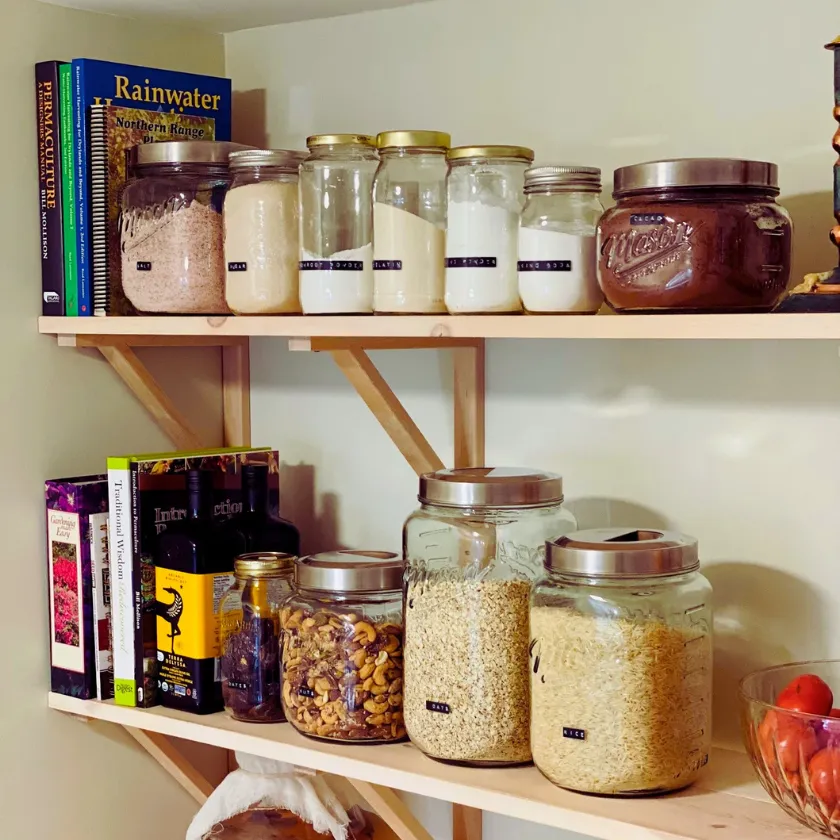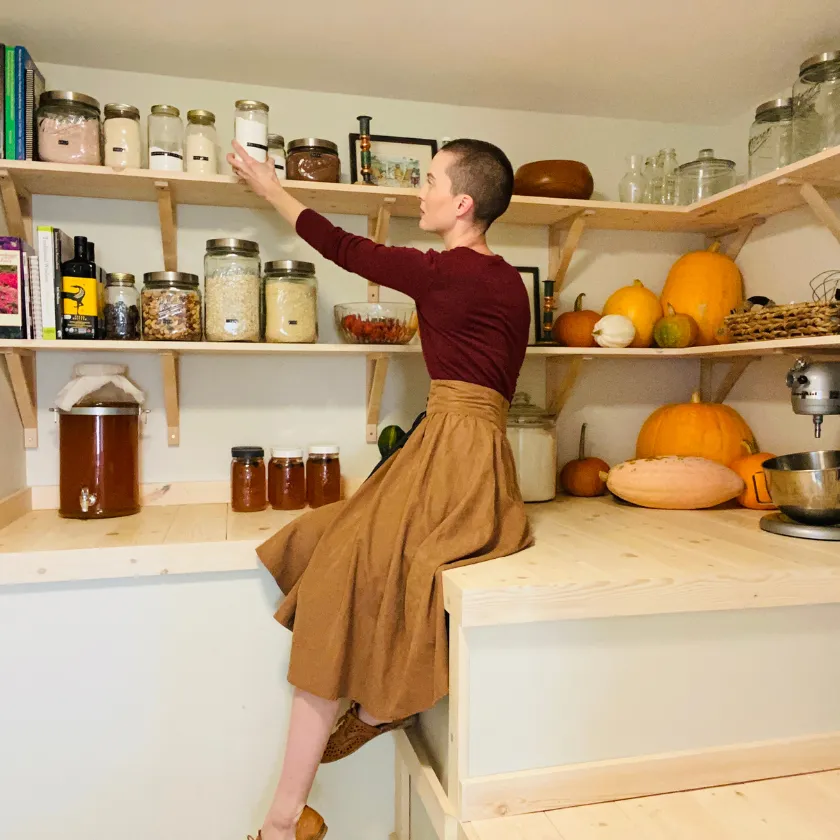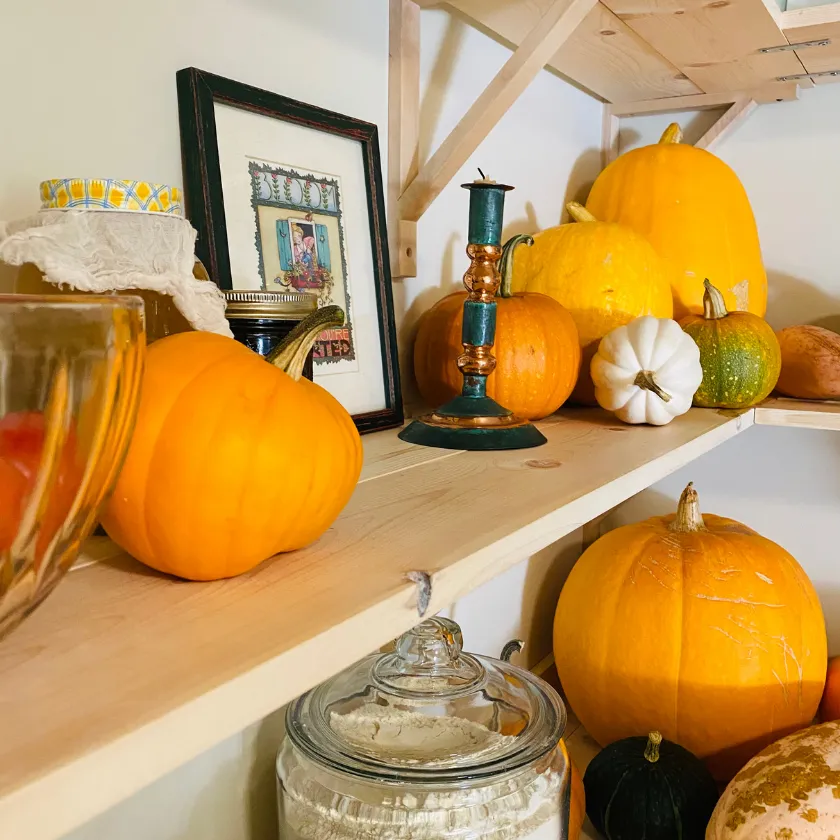In this article I will share with you some practical advise on how you can make a beautiful and functional capsule pantry.

A capsule pantry has many of same benefits as a capsule closet. They are both carefully curated collections of items that coordinate, meet all of your practical needs, express your personal style, and it saves you time, space and money.
With all of the cook books, recipe blogs and social media, we experience food trends just like the fashion industry. So for me, an intentional capsule pantry is one way that I am able to remain focused on what is important – real, nutrient dense food.
Here’s some practical ways that you can dial in your bulging pantry. For more ideas related to the “capsule mindset” read How to Make a Capsule Wardrobe | 5 Tips for Success.
How To Make A Capsule Pantry
Out With The Old
Pull everything out of your pantry and have a good look at it. Is everything you see edible? Throw away anything that is expired or stale, and if you are holding on to items that you actually don’t eat anymore, then consider tossing them, too.
Years ago, I decided to do this with my own pantry. I know – it’s painful to see food go to waste. But the things that I tossed were only wasting away anyways, and it was questionable whether it could be considered food. For example, I had sauces and dressings that had so many mysterious ingredients in them that I honestly couldn’t see them as being real food anymore. I’ve been making everything from scratch ever since. That bag of marshmellows that hadn’t been roasted on a fire for two years, was probably never going to get roasted after reading the ingredients…
Start by doing a good old fashioned pantry edit, guilt free.

What To Keep
It might take a while to really hone in on what you like to always keep stocked in your pantry. If you want to be successful with a capsule pantry then you will need to get creative sometimes. It can be easy to find a recipe that looks delicious, then go to the grocery store and buy everything you need. I encourage you to shop in your own pantry to see if you have a substitute, before buying more pantry items. I’ve found it helpful to organize my pantry items by the following categories. With these items, I can create almost any real food recipe that I desire.
Sweetener: I like to keep honey. We are able to get our honey by the bucketful from our local beekeepers. In the past, if a recipe called for stevia – I’d go by stevia. If it called for erythritol, or brown sugar, or maple syrup, or monk fruit, or coconut sugar – I’d go buy it! Now I find a way to substitute honey whenever I need to. I do also keep sugar so I can feed my kombucha, but I rarely cook or bake with it.
Fat: We usually have one or two types of fat on hand. I usually use olive oil, avocado oil, butter, ghee, tallow, or lard. I have never needed to have all of it at once, and will find a way to substitute any of these when I need to.
Thickeners: I choose to keep one ingredient that will thicken as its heated – arrowroot powder, and one ingredient that will thicken as its cooled – gelatin powder. With these two ingredients I can make many delicious recipes. From gravies and stew, to puddings and pies.
Carbs: This varies throughout the seasons. I usually have three of four carbs on hand in my pantry – including flour for making sourdough recipes – squash, rice and oats.
Snacks: I can make snacks using many of the ingredients that I keep in our pantry. But for those days when you just need something quick, I have nuts, and dates (or some type of dried fruit).
Baking Ingredients: Baking soda, baking powder, cacao powder, and vanilla.
Seasoning: We keep a big jar of salt available in the pantry. Salt gets a special spot on the pantry shelf because we use so much of it for fermenting projects and curing meat.
The rest of our herbs and spices are organized in jars in the kitchen where they are easy to access. Consider editing your spice rack with the same approach as your capsule pantry or capsule closet.

Make It Beautiful
Remove as much of the original packaging as possible and store it in glass containers.
Keep one box in your pantry for items that can’t be removed from their original packaging, such as canned tuna. This box can also be used for occasional items like crackers or granola bars.
Store the refills in a bin in your basement, or in a decorative basket or box.
Label your glass containers with a chalk marker, piece of paper tape, or label maker.
If you enjoyed this article, you may also like these:
How to Make a Capsule Wardrobe | 5 Tips for Success
